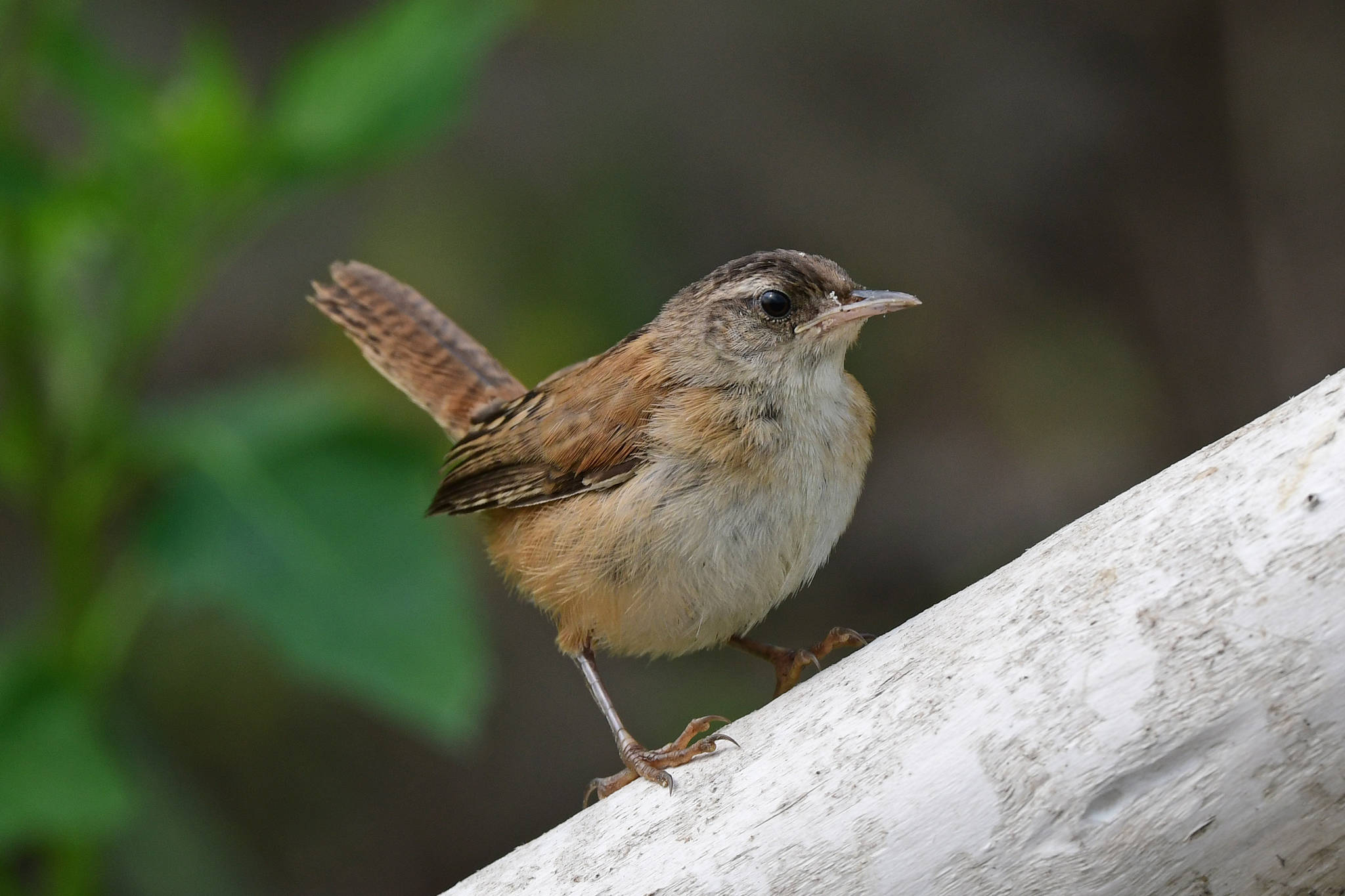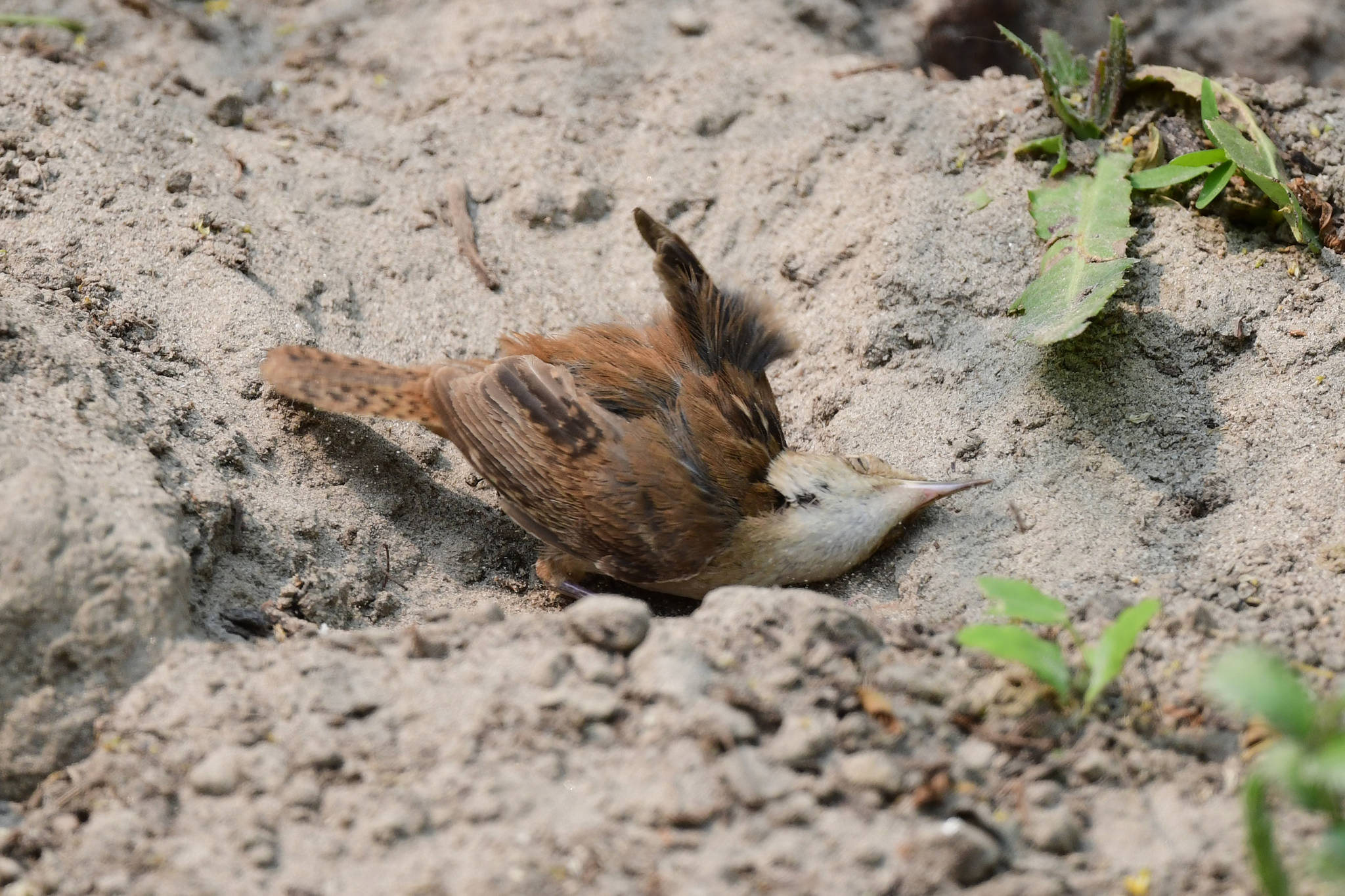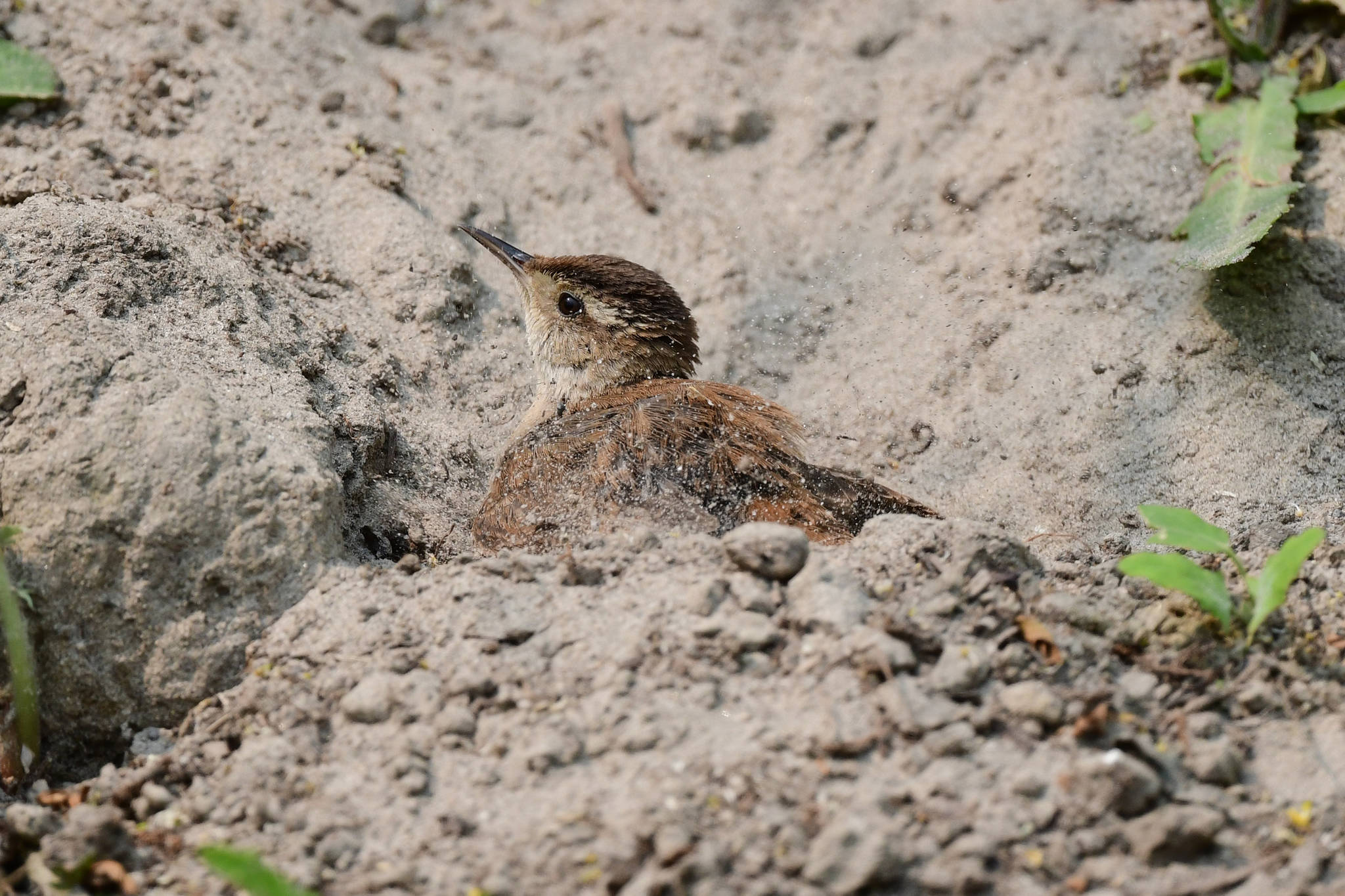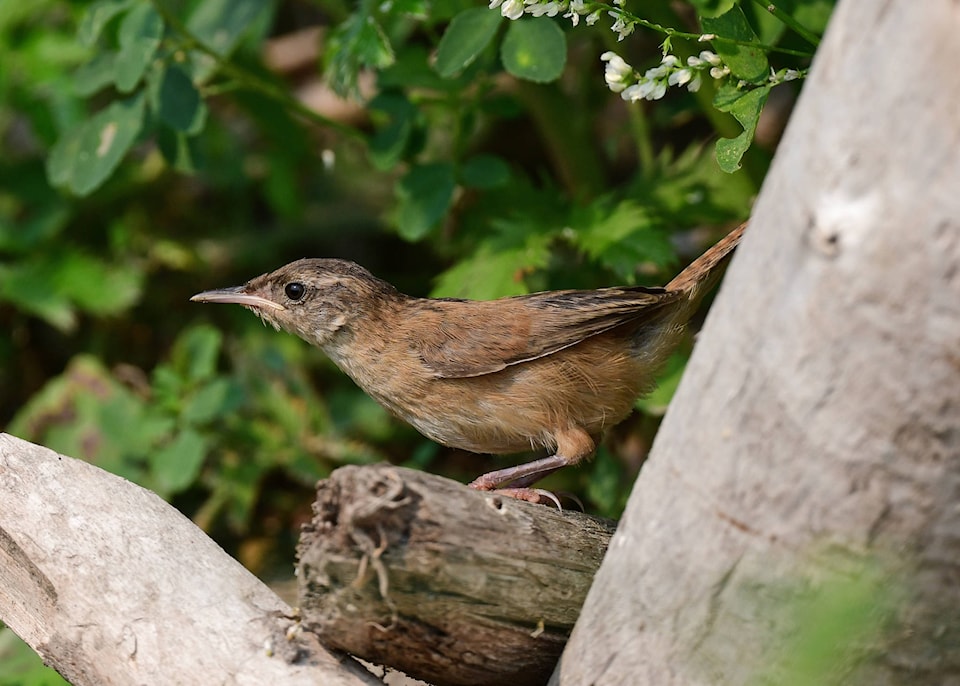Earlier this season, while enjoying an early morning kayak along the shallows on Buffalo Lake, we saw two juvenile marsh wrens. It was intriguing to watch them, but their frenetic movements and habit of skulking low along the shoreline made photography difficult.
When we returned a few hours later to our put-in spot near a sandy bank, we noticed several more marsh wrens, both juveniles and adults, flitting about. Although I have found their nests, heard the males sing and have caught occasional glimpses of them over the years, this was my first time seeing these beautiful little marsh dwellers in full view.
We soon noticed that they were all taking turns dust bathing in the sand. Dust bathing, which is practised by many bird species (like snow or water bathing), helps keep the feathers in good condition and control ectoparasites.
One of the four active bathing bowls was level with the kayak, so from this unique ringside seat, we were able to sit quietly and enjoy some very interesting wren watching. We observed that each energetic dust bath lasted from a few seconds to almost a minute. We also noted several conflicts over bathing rights, with dominant birds chasing off subordinates.
The birds quickly realized that we were no threat, so, in addition to watching them bathe, we were treated to a few close encounters as adults hopped into full view and a couple juveniles even landed adjacent to the kayak, their tiny legs splayed out between two bullrushes.
An hour and several hundred images later, and with storm clouds looming, we reluctantly bid adieu to these little denizens of the marsh.
When I returned home, I spent some time reading about the species. I learned that marsh wrens are found in cattail marshes and wet meadows in all Alberta natural regions except the mountains.
Males arrive first on the breeding ground and set to work weaving several complicated dome-shaped nests from strips of cattails, sedges and grasses. When the females arrive, the males sing their buzzy trill, cock their tails, and escort a potential mate around to inspect their handiwork. The female selects a nest (or in some cases builds her own) and they both aggressively defend the territory. Male marsh Wrens are grand philanderers, and both males and females will destroy their neighbours’ eggs and even kill the nestlings. They have also been known to destroy the nests of other marsh birds. Despite these seemingly unsavoury habits, marsh wrens are remarkable and fascinating wild neighbours.
Myrna is a retired biologist and enthusiastic naturalist/nature photographer. She has written several books, which can be ordered from www.myrnapearman.com. She can be reached at myrna@myrnapearman.com.



